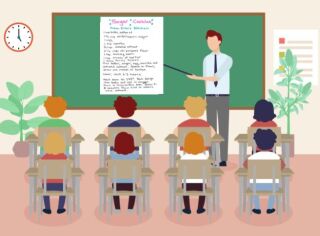Many students hate math and don’t see the relevance in the real world! If you can relate, you know that students will grumble, complain and resist doing math at every turn, especially when a fraction is involved. Math in the Kitchen was created based on a book I read where one of the main characters, who loved to cook, struggled with math. Her friend took a recipe and changed the wording to include math problems where basic multiplication, division and fractions were used to decode the actual ingredient amounts. I thought this was a clever way to have students practice math and see the real world connection in cooking and baking, so I created a few. Read on to check them out!
every turn, especially when a fraction is involved. Math in the Kitchen was created based on a book I read where one of the main characters, who loved to cook, struggled with math. Her friend took a recipe and changed the wording to include math problems where basic multiplication, division and fractions were used to decode the actual ingredient amounts. I thought this was a clever way to have students practice math and see the real world connection in cooking and baking, so I created a few. Read on to check them out!
Set
- Make sure students are familiar with measuring, equivalents and conversions before assigning this activity!
- If you are in need of these resources, please check out the Measuring Abbreviations & Equivalencies Reinforcement Activities.
- If you need the key for the converted recipes in this post, please email me at kim@familyconsumersciences.com and I will share it with you.
Materials
- Chalk Board
- Scratch Paper (optional)
- White Boards (optional)
Directions
- Place students into small groups.of 2-3 and explain that they will need to do basic math to solve or decode the recipes for actual ingredient amounts. Give them one of the recipes to work with…it’s up to you to choose.
- After students have solved the amounts, go over the answers as a group. Be sure to show students where they may have gone wrong if they did not get the correct answers.
- Do another practice run with a second recipe, again, your choice either as an individual assignment or a small group assignment.
- Go over the answers to the second recipe.Again, show students where they may have gone wrong if they didn’t get the correct answers.
- For the third recipe, use it as an individual assessment. Students will be graded on this one! After grading all of them, you can determine if you want to go over them as a class or allow students to recalculate any incorrect problems, one time, with you even if it’s for half credit. Once all students have finished with the recalculation, pass back all recipes and go over as a class.
- Optional Activity: Give each individual the opportunity to find a recipe, rewrite/reword the amounts just like the ones they worked with and provide a key and then use one a week to continue practicing their math. Before you know it, they’ll all be much better and for those schools who participate in state math tests, this will help them prepare for that as well. Note: you could also create one of these yourself for each unit and continue practicing for every unit you cover and then save them and you’ll have a complete set for the following year!
Attachments
- Brownies Recipe (PDF)
- Orange Cranberry Bread Recipe (PDF)
- Muffins Recipe (PDF)

